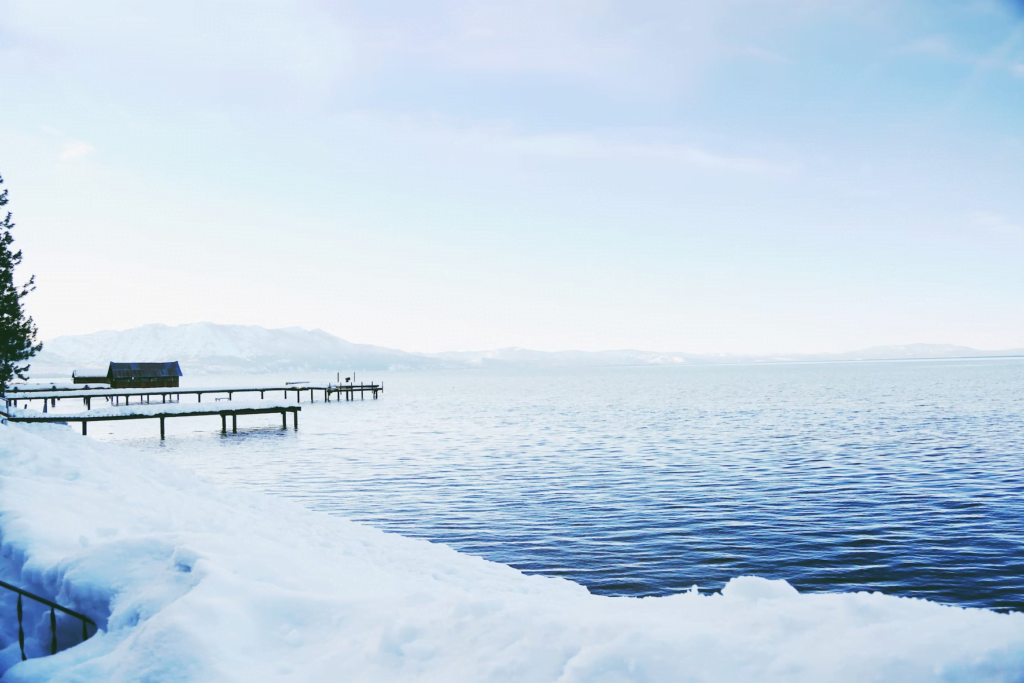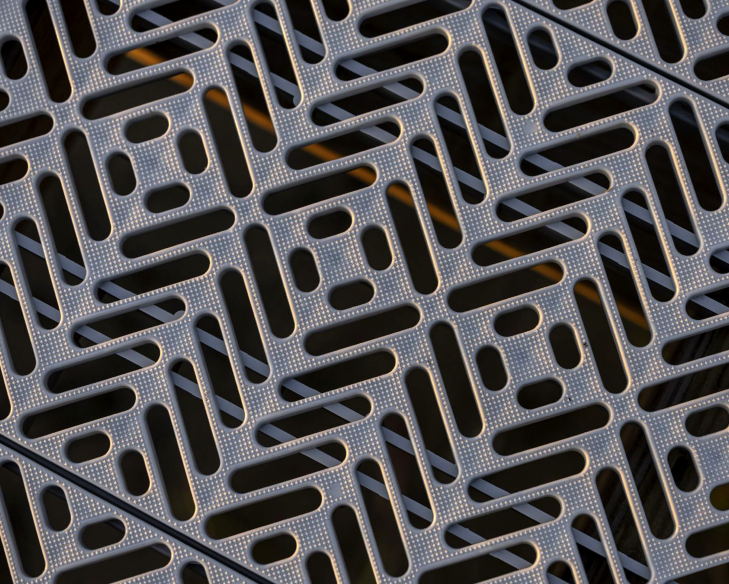
Winter is a difficult time for any outdoor installation, and deck boards are no exception. Ice can form in between the cracks of traditional wood boards and wedge them apart, weigh them down and even crack them. Winter storms push deck boards to their structural limits and weaken certain materials with each passing season. Fortunately, there are several ways you can protect your deck boards from the effects of the harshest winters.
How Winter Weather Can Damage Your Deck Boards
Water
Even if it doesn’t snow in your area during the winter, heavy winter rains can be just as troublesome for your deck boards. One of the primary ways that rain can damage marine traditional dock boards is by causing them to become waterlogged. Over time, exposure to rain can cause the boards to absorb water, which can make them heavier and weaker. This can lead to cracking, warping and other forms of damage that can compromise the structural integrity of the dock.
Another common problem caused by rain exposure is rot. Marine dock boards are often made from wood or other materials — we break down how different materials combat weather conditions later in the article — that are susceptible to rot when they are constantly exposed to moisture. Rainwater can also cause metal components of marine dock boards to corrode over time. The water can seep into small cracks and crevices in the metal, causing it to rust and deteriorate. This can weaken the structure of the dock and make it unsafe for use.
Snow and ice pose a far more dramatic threat to the integrity of your dock and deck boards. Snow and ice can lead to moisture damage if they are allowed to accumulate on the deck for an extended period of time. As the snow melts, the water can seep into the boards, causing them to expand and contract as the temperature fluctuates. This can cause warping or cracking, which can lead to more significant structural damage over time.
Also, be cautious when shoveling or scraping your deck to remove snow and ice, as it can cause surface damage to the deck boards. Scratches and gouges can make the decking boards more vulnerable to moisture damage and weaken the overall structure of the deck. You can use a plastic shovel or a snowblower to get rid of the snow with less risk of damaging your decking.
Wind
Winter storms often mean winter winds. One of the most common problems associated with high winds is uplift. This occurs when wind gets under the deck boards and lifts them up, causing damage to the fasteners or even lifting the boards off the deck entirely. This can be particularly problematic for structures that are not properly secured to the underlying joists.
High winds can cause debris, such as branches or even entire trees, to fall onto your dock, damaging the boards, railings and other structural components of the deck. Over time, constant exposure to strong winds can cause the boards to become dry and brittle, making it more vulnerable to cracking and other forms of damage.
To prevent wind damage to your deck, it’s essential to ensure that your structure is properly designed and constructed to withstand local wind conditions. This may involve installing additional supports, using heavier decking materials or securing the deck to the underlying structure with powerful fasteners. Additionally, it’s important to inspect your deck regularly for signs of damage and make any necessary repairs as soon as possible to prevent further deterioration.
What You Can Do To Protect Your Dock Boards During the Winter

To efficiently protect your deck boards during the winter, you’ll want to make sure the deck is clean as often as possible. Winter weather can cause debris and other materials to build up on your dock, which can lead to damage or contribute to moisture retention. Keep your dock clean by sweeping it off regularly and removing any debris that may have accumulated. Additionally, removing snow from your dock as soon as possible can help prevent it from melting and causing damage.
During winter storms, high winds and heavy snowfall can cause damage to items left on your dock. To prevent this, it’s a good idea to secure any loose items and cover furniture. If you’re expecting a big storm or just want to be extra cautious, you can remove the items and store them in a safe location.
Make an inspection in spring and see if anything needs to be fixed. This can include checking for signs of corrosion, loose or damaged fasteners and other forms of wear and tear. Any necessary repairs should be made promptly to prevent further damage and ensure that your dock is ready for the next winter season.
Select a decking material that is more resilient to the elements, and more durable. Choosing a decking material that is designed to withstand the elements can help prevent damage to your dock during the winter season. Choosing a material that is durable and long-lasting can help reduce the need for frequent repairs or replacements over time.
How Different Deck Materials Resist the Weather

Wooden Deck Boards
Wooden decking can be vulnerable to damage during the winter months due to exposure to harsh weather conditions, such as freezing temperatures, snow, and ice. Here are some ways that wooden decking can be affected by winter weather. Wood is especially susceptible to damage from moisture saturating the wood, freezing and splitting the wood apart.
To protect wooden dock boards from winter weather damage, it’s important to properly maintain and seal the deck before winter arrives. This can include sealing the deck with a waterproof sealant, removing debris and snow from the deck regularly and using ice melt products that are safe for use on wood. Additionally, it’s important to inspect the deck regularly for signs of damage, such as cracking or warping and make any necessary repairs as soon as possible.
Composite Deck Boards
Composite decking is generally more resistant to damage from winter weather than wooden decking. Composite deck boards are typically made of a mixture of wood fibers and plastic materials, which makes them more resistant to moisture damage from snow and ice. Unlike wood, composite decking does not absorb water, which means it will not warp, crack or split due to moisture.
Composite decking is designed to be more resistant to temperature fluctuations and extreme temperatures. This means that it is less likely to become brittle and prone to cracking during the winter months. Composite deck boards require less dock maintenance than wood decking, which can make it easier to care for during the winter months. Because it is less likely to warp or crack, it also may not require sealing or staining as frequently as wood decking.
However, it’s important to note that composite decking is not completely impervious to winter weather damage. Over time, exposure to cold temperatures, snow and ice can cause some composite decking materials to fade or discolor. Additionally, heavy snow or ice buildup on the deck may still cause some damage, particularly if the deck is not properly installed or maintained.
To protect your composite decking from winter weather damage, it’s important to remove snow and ice from the deck regularly, use a plastic shovel or snow blower instead of a metal one, and avoid using salt or other ice-melt products that can damage the surface of the decking.
Metal Decking
Metal decking, especially aluminum and galvanized steel, is typically more resistant to damage from winter weather compared to wood or composite decking. However, there are still some ways that metal decking can be affected by winter weather.
Metal decking can be prone to corrosion, especially if it is exposed to salt and other de-icing chemicals. This can lead to rust and other forms of damage that can weaken the structure of the deck over time. Metal decking can become very slippery when covered with snow and ice, which can increase the risk of slips and falls. However, some metal decking options come with anti-slip coatings or textures to help prevent these accidents.
To protect metal decking from winter weather damage, it’s important to properly maintain the deck and avoid using harsh chemicals or abrasive materials to remove snow and ice. Additionally, it’s important to inspect the deck regularly for signs of corrosion or other forms of damage. Make any necessary repairs as soon as possible to prevent further deterioration.
Polypropylene Deck Boards

Polypropylene decking is especially resistant to damage from winter weather compared to wood decking. Polypropylene decking is highly resistant to moisture, which makes it less vulnerable to damage from snow and ice. Polypropylene decking is also thermally stable, which means that it is less likely to expand and contract as temperatures fluctuate. This can prevent stress on the fasteners and other structural components of the deck, which can lead to damage over time.
Polypropylene decking is typically low maintenance, which can be particularly beneficial during the winter months when outdoor maintenance may be more challenging. It doesn’t require staining or sealing like wood decking and can be easily cleaned with soap and water.
Companies like Titan Deck produce some of the top-quality polypropylene deck boards on the market. Unlike wood or composite decking counterparts, their 100% polypropylene boards are guaranteed to exceed expectations for years to come with the advantages of no warping, bending, cracking, splinters or tiresome upkeep. Plus, compared to its wood and composite counterparts, Titan Deck’s board design allows for wind to pass through effortlessly, allowing the dock to stand up against winter storms.
While Titan Deck boards may not be less expensive than other materials initially, the long-term cost savings are significant. With Titan Deck, you’ll experience a longer dock lifespan compared to traditional wooden docks and greater resistance to storm damage and cold weather.
Ultimately, choosing Titan Deck can save you money in the long run by reducing the frequency of dock replacements and repairs. For more information on various polypropylene plastic marine decking solutions, check out our offerings and speak to one of our Titan Deck Experts for more information.
